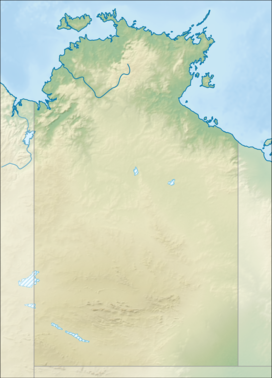Olgas
| Kata Tjuṯa | |
|---|---|
| Kata Tjuta | |

Kata Tjuṯa
|
|
| Highest point | |
| Peak | Mount Olga |
| Elevation | 1,066 m (3,497 ft) |
| Coordinates | 25°18′S 130°44′E / 25.300°S 130.733°ECoordinates: 25°18′S 130°44′E / 25.300°S 130.733°E |
| Geography | |
|
|
|
Kata Tjuṯa, (Pitjantjatjara: Kata Tjuṯa, lit. 'many heads'; Aboriginal pronunciation: [kɐtɐ cʊʈɐ]), also known as the Olgas, is a group of large, domed rock formations or bornhardts located about 365 km (227 mi) southwest of Alice Springs, in the southern part of the Northern Territory, central Australia. Uluru, also known as Ayers Rock, located 25 km (16 mi) to the east, and Kata Tjuta form the two major landmarks within the Uluru-Kata Tjuṯa National Park. The park is considered sacred to the Aboriginal people of Australia.
The 36 domes that make up Kata Tjuṯa cover an area of 21.68 km2 (8.37 sq mi), are composed of conglomerate, a sedimentary rock consisting of cobbles and boulders of varying rock types including granite and basalt, cemented by a matrix of sandstone. The highest dome, Mount Olga, is 1,066 m (3,497 ft) above sea level, or approximately 546 m (1,791 ft) above the surrounding plain (198 m (650 ft) higher than Uluru). Kata Tjuta is located at the eastern end of the Docker River Road.
The alternative name, The Olgas, comes from the tallest peak, Mount Olga. At the behest of Baron Ferdinand von Mueller, Mount Olga was named in 1872 by Ernest Giles, in honour of Queen Olga of Württemberg (born Grand Duchess Olga of Russia, daughter of Tsar Nicholas I). She and her husband, King Charles I of Württemberg, had marked their 25th wedding anniversary the previous year by, amongst other things, naming Mueller a Freiherr (baron), making him Ferdinand von Mueller; that was his way of repaying the compliment.
...
Wikipedia


